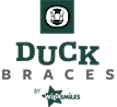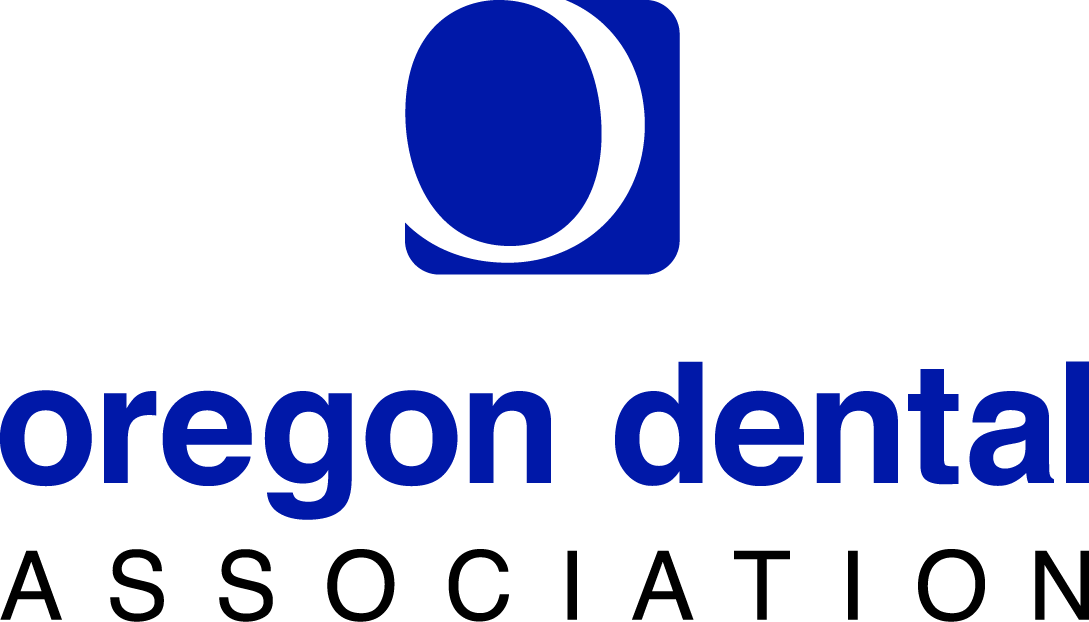Common Orthodontic Treatments
Crowding of the teeth
 Before
Before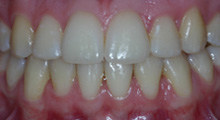 After
AfterThis patient started treatment at age 12 and wore braces for 30 months. A custom treatment plan was designed to accomodate all these beautiful teeth into a healthy alignment and good functional bite. She loves her new smile.
Open bite - Front teeth don't touch
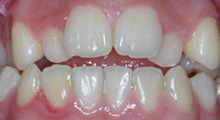 Before
Before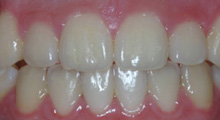 After
AfterThis young lady sucked her thumb as a young child. She started treatment at age 17, when she decided she wanted to be able to fully bite into foods. She had braces for 24 months to correct this open bite. Now she can bite the lettuce out of a sandwich.
Any type of finger or thumb habit can cause malformation in the roof of a mouth or severe flaring of the front teeth. A simple appliance can be used when a child is young to redirect this habit and promote heathly developement of the teeth and jaw.
Deep overbite - Lower front teeth bite into palate
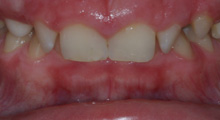 Before
Before After
AfterThis adolescent patient, age 14, only required braces for 24 months to correct his severe deepbite. Similar adult cases often include jaw surgery to correct this type of bite. If he had been left untreated severe premature wear of his lower teeth, as well as damage to the gum tissue behind the upper front teeth, would have been likely.
Missing lateral incisors
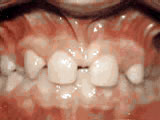 Before
Before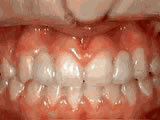 After
AfterThis patient's lateral incisors were congenitally missing. She had braces for 20 months to move the teeth into their correct positions, then the missing teeth were replaced with implants.
Underbite - Lower front teeth in front of upper teeth
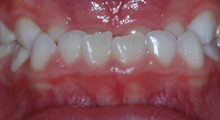 Before
Before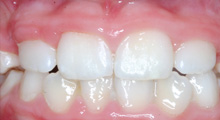 After
AfterThis patient was seen for an initial evaluation of his underbite at age 7. His entire lower jaw bit on the outside of his upper jaw, the opposite of how they are designed to fit. His interceptive treatment included braces for a short time and headgear worn only during non-school hours. Now, his bite is in a much healthier relationship and he has avoided permanent malformation of his jaws.
Since this was noticed in childhood, and it is best to treat this problem early, Dr. Thornton helped him avoid corrective jaw surgery as an adult. Once the underbite was corrected, braces were removed to allow the remaining teeth to come in naturally. Dr. Thornton will continue to monitor his growth and development to correctly time any additional orthodontic treatment.
Spacing of teeth
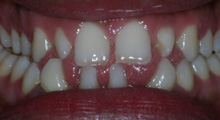 Before
Before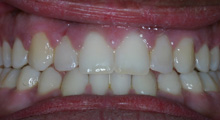 After
AfterPatient was bothered by the spaces in his smile, created by genetically small teeth. Dr. Thornton worked with his general dentist to plan build-ups on his teeth and then closing any excess space. Braces closed the spaces and gave him an ideal bite in 24 months. Special glued-in retainers help keep the spaces closed.
Overjet - Protruding front teeth
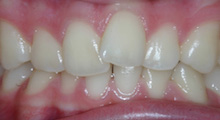 Before
Before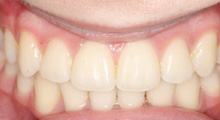 After
AfterAt age 11, this patient had a big overjet with the top teeth protruding beyond the bottom. Dr. Thornton used growth modification treatment involving the MARA to advance her lower jaw. By age 13, she was proudly displaying her new smile.
Phase-One
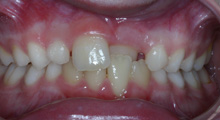 Before
Before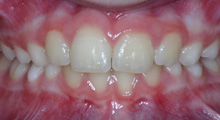 After
AfterThis patient's parents were concerned about both aesthetics and the health of the erupting permanent teeth when they brought him to the orthodontist at age 7. The upper front tooth was trapped behind the lower partner when he bit and it was causing the lower gum to receed. After 12 months of Phase-One treatment with an expander and partial braces, patient's appearance and dental function were vastly improved.
Dr. Thornton only recommends phase I treatment in situations when there is serious functional reason that correction should not wait until all permanent teeth have come in. Unless there is concern by a patient or family member, his preference is always to make treatment as short and easy as possible.
Cross bite
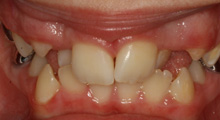 Before
Before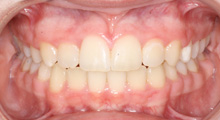 After
AfterThis patient had two upper front teeth that were trapped behind the lower teeth when she bit down. This type of bite relationship is call a cross bite. The bite was aligned with braces and space was opened so the teeth that were in cross bite could be brought forward into their proper place. A cross bite can be present with a of couple teeth, like this young lady, or can involve an entire side of the mouth. It is best to treat a cross bite relationship at a young age, while patients are still growing, otherwise it can cause the lower jaw to develop incorrectly. Often times, an untreated cross bite can result in surgical jaw correction as an adult.



